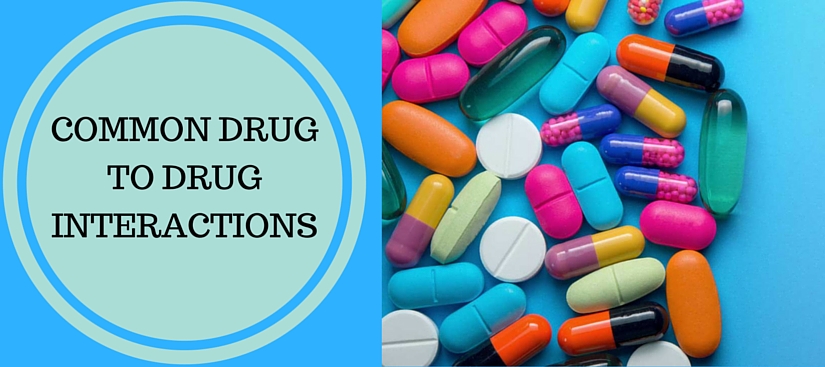
4 Common Drug-Drug Interactions and Their Side-Effects
A clinically relevant Drug-Drug Interaction (DDI) occurs when the effectiveness of one medication is altered by the administration of another drug, directed for the medical purposes. The occurrence of adverse DDIs is a possible medical error that can be preventable. It is important that health professionals evaluate the potential for DDIs and, if detected, determine appropriate prevention strategies.
Here is a list of common drug-drug interactions that one must avoid:
1. Tamoxifen (Nolvadex®) and Antidepressants
Tamoxifen is a hormone therapy drug prescribed to a woman experiencing perimenopause post estrogen-sensitive breast cancer treatment. Doctors’ often prescribe antidepressants along with Tamoxifen to cope with the side-effects of Tamoxifen and to help with depression. However, some of the antidepressants can cancel out the benefits of Tamoxifen, and must be avoided!
Side-effects:
Tamoxifen itself suppresses hormones within the body that can have an impact on the mood significantly. When taken with any antidepressant, it can cause severe depression. Antidepressants may also hinder some of the active enzymes of Tamoxifen, making it less effective.
2. Warfarin (Coumadin®) and Amiodarone (Cordarone®)
Coumadin is an anticoagulant (blood thinner) that decreases the formation of blood clots in the body. It reduces the risk of heart attack and stroke by preventing or treating blood clots in vein or arteries. Individuals prescribed with Coumadin also have the risk of developing supraventricular or ventricular arrhythmias which requires treatment with an antiarrhythmic medication. Amiodarone (Cordarone) is considered one of the first-line antiarrhythmics medication.
Side-effects:
An individual taking Warfarin must take Amiodarone carefully. Amiodarone is a potent inhibitor of a number of cytochrome P450 enzymes. Inhibition of these enzymes by Amiodarone can lead to increased plasma concentrations, thereby increasing the individual’s prothrombin time and international normalized ratio (INR). This increases the risk of bleeding complications. Therefore, giving Amiodarone to a patient who is already taking stable doses of Warfarin will potentiate the effects of Warfarin and increases the risk of hemorrhagic complications.
3. Simvastatin and Amiodarone (Cordarone®)
Simvastatin belongs to HMG CoA Reductase inhibitors group of drugs. It reduces levels of “bad” cholesterol and triglycerides in the blood and increases the levels of “good” cholesterol. Simvastatin also decreases the risk of stroke, heart attack, and many other heart related complications in people experiencing medical issues including coronary heart disease, diabetes, etc. It is generally prescribed to adults and children older than 10.
Side-effects:
Combining Simvastatin with Amiodarone increases the blood levels of simvastatin in the body. This raises the risk of potential side-effects including liver damage and a rare but serious condition called rhabdomyolysis (involves the breakdown of skeletal muscle tissue.) Rhabdomyolysis can also lead to kidney damage and even death in some cases. Let your doctor know immediately if you have unexplained weakness, muscle pain, and tenderness at the time of treatment with simvastatin or similar medications.
4. Warfarin (Coumadin®) and Carbamazepine (Tegretol®)
As we already know, Coumadin is an anticoagulant used to reduce the formation of blood clots in the body. It helps to reduce the risk of heart attack, stroke by preventing or treating blood clots in vein or arteries.
Side-effects:
Many anticonvulsants raise the metabolism rate of Warfarin and decrease its Hypoprothrombinaemic effect. This happens because of induction of hepatic microsomal enzymes. Carbamazepine induces microsomal enzymes in human body and shortens the Hypoprothrombinaemic effect under controlled conditions. So Carbamazepine reduces the effect of Warfarin i.e., the effects of your blood thinner may decrease and chances of blood clot formation may increase.


